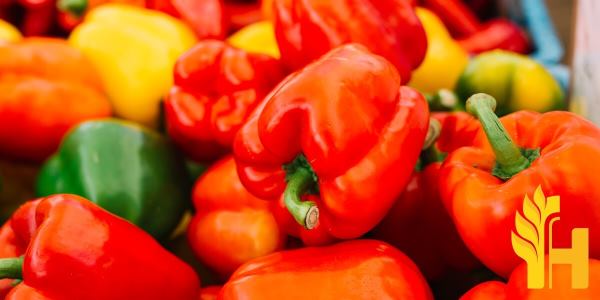Redpepper price

Where to buy and sell Redpepper, lowest (cheapest) and highest price.
check offers buy sell RedpepperToday price for RedpepperRed pepper
Red pepper is characterized by its by a unique taste and many valuable nutritional values and health properties. It provides the human body with minerals, vitamins (C, E, A), phosphorus, potassium and iron. Red pepper is an excellent source of vitamin C and beta-carotene, yellow - lutein, and green - folic acid. The vegetable is an excellent source of antioxidants that help fight free radicals and thus inhibit the aging process. What's more, the properties of paprika support metabolism and support natural immunity.Red pepper is often eaten not only raw, but also in the form of preserves, stewed, boiled, as an addition to sauces, soups and various dishes. The important thing is that even after heat treatment, it retains many important nutrients.
Unfortunately, the cultivation of red pepper is quite demanding. Achieving good yields may be extremely hard, especially for amateurs and beginner gardeners. In Poland, due to the climate and weather conditions, it is a perennial plant grown from specially prepared seedlings. The seedlings can also be bought in many gardening stores.
Before planting red pepper into the ground, it is worth choosing a place carefully, because it will be of key importance for the growth of the bush and fruit formation. Red pepper grows best in a warm, sunny and quiet position. If it is not covered by artificial covers, a good idea is to surround red pepper with other plants which will not block the sunlight but will protect it from cool gusts of wind.
The leading producer of the red bell pepper is Vietnam with almost 272579 tons of the vegetable produced every year. The second-largest production takes place in Brazil with almost 96721 tons of red pepper produced each year. The third-largest production of this vegetable takes place in Indonesia, where up to 88911 tons of raw vegetable is produced annually.
Global redpepper production
In 2016, the global production of red pepper vegetables was estimated at 18.4 million metric tons. The top five producing countries were China (5.8 million metric tons), Turkey (3.0 million metric tons), India (2.6 million metric tons), Italy (1.7 million metric tons), and Spain (1.4 million metric tons). Together, these five countries accounted for approximately 60 percent of the world's total red pepper production. China is the world's largest producer of red pepper vegetables, accounting for more than 30 percent of the global total. Chinese production is primarily concentrated in the provinces of Sichuan and Yunnan. Turkey is the second largest producer, with most of its production happening in the Aegean and Marmara regions. India is the third largest producer, with major production areas including Andhra Pradesh, Karnataka, and Maharashtra. The top five global red pepper-producing countries are all located in Asia or Europe. North America is a distant sixth, with the United States accounting for the vast majority of production in the region. Other significant red pepper-producing countries include Egypt, Mexico, Peru, and Iran. The global production of red pepper vegetables has been growing steadily in recent years, driven by strong demand from both developed and developing countries. In developed countries, red pepper consumption is typically highest during the summer months when they are used in salads and other cold dishes. In developing countries, red peppers are often used as a cooked vegetable or spice. Red pepper production is expected to continue to grow in the coming years, driven by strong demand from both developed and developing countries.Download our new
Husfarm App
Stay up to date with the current prieces of agricultural products all over the world.
Do you want to sell agricultural products?
Are you an Agricultural processor looking for high-quality products to buy?
Post an ad for FREE!
